Shannon Sullivan


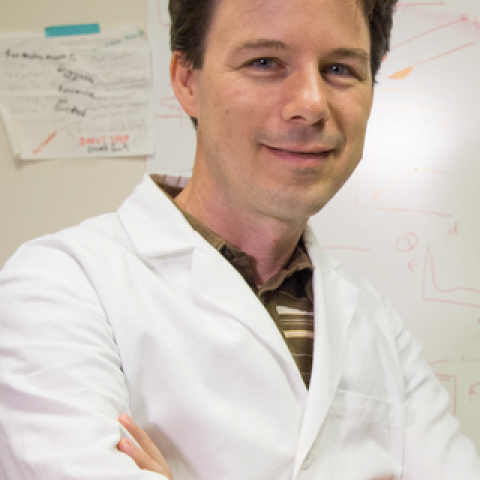
Todd Sulchek is an associate professor in Mechanical Engineering at Georgia Tech where he conducts fundamental and applied research in the field of biophysics. His research program focuses on the mechanical and adhesive properties of cell and biological systems and the development of microsystems to aid in their study. His research employs tools, including, MEMS, microfluidics, imaging, and patterning to understand or enable biological systems. His interests include cancer diagnostics, stem cell biomanufacturing, novel therapeutics, and ultracheap engineering tools. He is a member of the interdisciplinary Institute for Bioengineering and Bioscience. Dr. Sulchek also holds program faculty positions in Bioengineering and Biomedical Engineering and has a courtesy appointment in the School of Biology. He received his Ph.D. from Stanford in Applied Physics under Calvin Quate and received a bachelors in math and physics from Johns Hopkins. He was a postdoc and staff scientist at Lawrence Livermore National Lab. He joined Georgia Tech in 2008 as an Assistant Professor of Mechanical Engineering. He is a recipient of the NSF CAREER award, the BP Junior Faculty Teaching Excellence Award, the Lockheed Inspirational Young Faculty award, and the 2012 Petit Institute Above and Beyond Award. To date he has published 42 journal papers and has filed or been issued 7 patents. Prof. Sulchek is a strong supporter of undergraduate research, and he participates in a variety of undergraduate education activities including the Undergraduate Research Opportunities Program (UROP) and includes over 8 undergraduate authors in the past year.
Biomedical Devices; bio-MEMS; biosensors; Drug Delivery; Advanced Characterization. Dr. Sulchek's research focuses primarily on the measurement and prediction of how multiple individual biological bonds produce a coordinated function within molecular and cellular systems. There are two complementary goals. The first is to understand the kinetics of multivalent pharmaceuticals during their targeting of disease markers; the second is to quantify the host cell signal transduction resulting from pathogen invasion. Several tools are developed and employed to accomplish these goals. The primary platform for study is the atomic force microscope (AFM), which controls the 3-D positioning of biologically functionalized micro- and nanoscale mechanical probes. Interactions between biological molecules are quantified in a technique called force spectroscopy. Membrane protein solubilized nanolipoprotein particles (NLPs) are also used to functionalize micro/nano-scale probes with relevant biological mediators. This scientific program requires the development of enabling instrumentation and techniques, which include the following: Advanced microscopy and MEMs; Nanomechanical linkers, which provide a convenient platform to control biomolecular interactions and study multivalent molecular kinetics; Biological mimetics, which provide a simple system to study cell membranes and pathogens. UltIMaTely, this work is used to optimize molecular drug targeting, improve chem/bio sensors, and develop more efficient pathogen countermeasures.

Mark Styczynski is an Associate Professor in the School of Chemical & Biomolecular Engineering at the Georgia Institute of Technology (Georgia Tech), doing research at the interface of synthetic and systems biology as applied to metabolic systems. His synthetic biology work focuses on the development of low-cost, minimal-equipment biosensors for the diagnosis of nutritional deficiencies in the developing world. His systems biology work uses computational and experimental methods to characterize metabolic dynamics and regulation using metabolomics data. He has received young investigator awards from the NSF, DARPA, and ORAU. He has won multiple department-and institute-level teaching awards at Georgia Tech. He founded and was the first president of the Metabolomics Association of North America (MANA), and is a Council Member in the Engineering BiologyResearch Consortium.
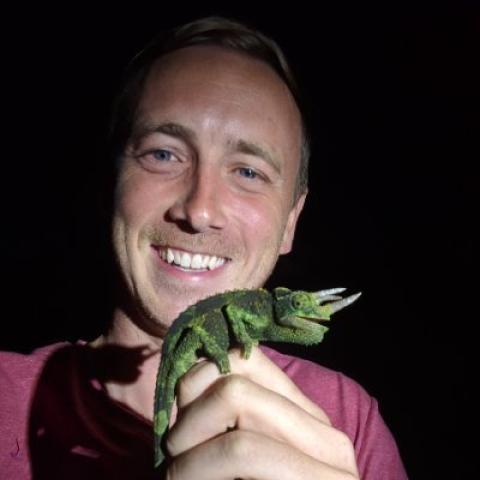
Educational Experience:
Ph.D., Ecology & Evolution, Florida International University, B.Sc. (Hons), Zoology with Conservation, University of Wales
Research Interests:
Evolutionary ecology, community ecology, species interactions, microevolution, macroevolution, herpetology, global change biology, climate change, invasive species, functional morphology
Overview:
Welcome to the Stroud Lab!
Our goal is to understand the ecological and evolutionary processes responsible for driving patterns of biodiversity across space and time. To do that, we study the evolutionary ecology of lizards: a fascinating and hyper-diverse group of organisms.
Our approach is highly multidisciplinary, integrating ecology, evolution, behavior, physiology, biomechanics, and natural history. To do this, we combine field studies in the wild with macro-ecological and evolutionary analyses.
For more information on our key research themes please take a look at our website (above; soon to be updated) and please get in contact if any of our research interests you!

Streelman grew up in Chestertown Md, where he developed a keen interest in the outdoors. He graduated with a BS in Biology from Bucknell University. While there, he attended a semester (plus one cold winter-mester) at the Marine Biological Laboratory in Woods Hole Massachusetts — where a chance encounter with Les Kaufman, Karel Liem, a few jars of pickled fish and a dental X-ray technician led to his lifelong love of cichlids. Streelman won the Pangburn Scholar-Athlete award (lacrosse) at BU. As a PhD student with Stephen Karl, Streelman developed approaches to identify, clone and sequence multiple, independent single-copy nuclear loci to reconstruct accurate phylogenies for cichlid fishes and their relatives. These phylogenies changed perspective about how these species groups evolved, and allowed new and improved inference about the evolutionary history of key ecological traits. Multi-locus phylogenies are now the standard in the field.
As a postdoc in Tom Kocher’s lab and then a young investigator at Georgia Tech, Streelman worked on the first unbiased quantitative genetic (QTL) studies in Malawi cichlids, some of the first such studies in evolutionary systems. In particular, work showed that adaptive features of the cichlid jaw and the striking orange-blotch color polymorphism had a simple genetic basis.
Streelman was an Alfred P. Sloan Foundation Postdoctoral Fellow, an Alfred P. Sloan Foundation Faculty Research Fellow and a NSF CAREER Awardee.
Over the past two decades as an independent investigator, with support from the NSF, NIH and the Human Frontier Science Program, Streelman’s group has pioneered genomic and molecular biology approaches in the Malawi cichlid system to solve problems difficult to address in traditional model organisms. Major projects include (i) tooth and taste bud patterning and regeneration; (ii) the underpinnings of complex behavior; and (iii) developmental diversification of the face and brain.
Generally, we are captivated by context-dependent traits like development and behavior because they must be executed in space and time with exquisite control. We analyze and manipulate genomes and development in multiple species of Malawi cichlids, spanning divergence in embryonic/adult traits and behavior – and collaborate with folks studying these same traits in zebrafish, mouse and human. In 2014, Streelman helped to coordinate a large effort to sequence the genomes of five East African cichlids, including one from Lake Malawi. This was a landmark for our research community and has recast attention to genome-wide approaches. We are motivated by the prospect to dissect evolutionary change with genetic and cellular precision.
In his free time, Streelman likes mountaineering, skipping rocks and pickling.
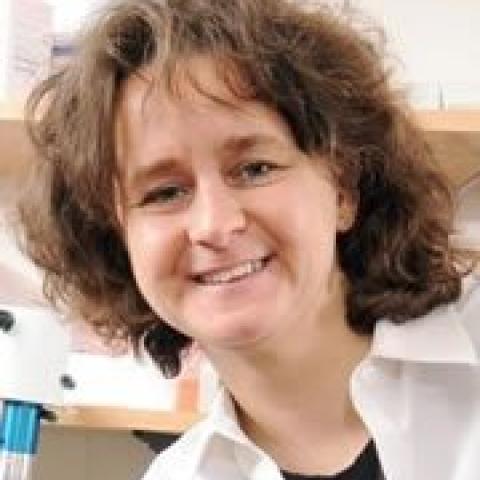
Francesca Storici was born in Trieste, Italy. She graduated in Biology from the University of Trieste. Her Ph.D. in Molecular Genetics was conferred by the International School for Advanced Studies (SISSA), in Trieste in 1998, and she conducted research at the International Centre for Genetic Engineering and Biotechnology (ICGEB) in Trieste. From 1999 to 2007 she was an NIH postdoctoral fellow in the Laboratory of Molecular Genetics under the guidance of Dr. Michael A. Resnick at the National Institute of Environmental and Health Sciences (NIEHS, NIH) in the Research Triangle Park of North Carolina, USA. In 2007 she was a Research Assistant Professor at the Gene Therapy Center of the University on North Carolina at Chapel Hill with Dr. R. Jude Samulski. Francesca joined the faculty of the School of Biological Sciences at Georgia Tech in 2007 and received the title of Distinguished Cancer Scientist of the Georgia Research Alliance. She is currently a professor in the School of Biological Sciences at Georgia Tech. Her research is on genome stability, DNA repair and gene targeting.

Education
B.S., Chemistry, Massachusetts Institute of Technology, 2004; B.S., Aerospace Engineering, Massachusetts Institute of Technology, 2004; M.A., Chemistry, Brown University, 2006; Ph.D., Chemistry, University of California Berkeley, 2010
Research
Dr. Stockton joined the School of Chemistry and Biochemistry at the Georgia Institute of Technology in January 2015. Her research plans include (1) instrument development for in situ organic analysis in the search for extraterrestrial life, (2) microfluidic approaches to experimentally evaluating hypotheses on the origin of biomolecules and the emergence of life, and (3) terrestrial applications of these technologies for environmental analysis and point-of-care diagnostics.

We study the simple larval nervous system of our closest invertebrate relatives, the tunicates. Tunicates, like us, belong to the Chordate phylum, but have very simple embryos and compact genomes. The laboratory model tunicate Ciona has only 177 neurons and is the only chordate with a fully mapped "connectome". We take advantage of this simplicity to understand molecular mechanisms that may underlie human neurodevelopment. We use transcriptome profiling to assay global transcriptional dynamics in neural progenitors during Ciona development, and use CRISPR/Cas9 to knock out important transcription factors and their downstream targets to understand how these gene networks control neuronal specification, morphology, physiology, neurotransmitter identity, and connectivity.
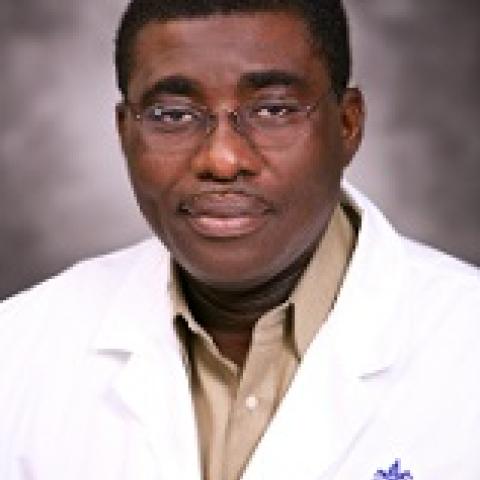
Graduate
University of Salford
Degree: Doctor of Philosophy
Undergraduate
University of Ghana
Degree: Bachelor of Science
Research Interests
Molecular pathogenesis of neglected diseases that affect the central nervous system (CNS) with emphasis on cerebral malaria and African trypanosomiasis ("Sleeping Sickness")
Our research is focused on three main areas; a) Understanding pathogen-induced brain encephalopathy, and b) Research and development of anti-parasitic drugs and c) Understanding immunopathogenesis of Sickle Cell Disease
Pathogen-induced brain neuropathy (Cerebral malaria & African Trypanosomiasis). In collaboration with the Neuroscience Institute here at MSM, Queens College, NY, University of Ghana Medical School, and CDC, Atlanta, GA, we are studying the role of cerebral malaria (CM) and African trypanosomiasis (HAT) in brain neuropathy. Both diseases impact the central nervous system and result in diffuse encephalopathy in the infected. The encephalopathy associated with malaria for example is associated with 10-14% of mortality with an estimated annual death of 1-2.5 million annual deaths globally. The molecular mechanisms controlling these outcomes are unclear. Current studies ignore malaria-induced gross neurological defects and the impact of this disease on learning, cognitive function and neuro-psychology. The absence of effective vaccines or drugs to protect against these diseases coupled with the increasing drug resistance has resulted in the re-emergence of malaria and trypanosomiasis in the tropics and subtropics. We are employing bio-informatics, functional genomics, and proteomics in human and mouse disease models to study the role of immunomodulators, apoptosis, and signaling factors in CM and HAT-induced brain pathology.
Research & Development of anti-parasitic drugs. In collaboration with Yale University, University of Mississippi Medical Center, (UMC), and Noguchi Medical Research Institute in Ghana, we are targeting cation homeostasis mechanisms of trypanosomes during infection. Millions of Latin Americans infected with Trypanosoma cruzi (Chagas disease) suffer chronic splenomegaly, cardiac myopathy and megacolonitis while millions are at risk of infection with African trypanosomes (HAT) in Africa. HIV infection exacerbates susceptibility to and further complicates malaria and HAT. Available drugs are very toxic while supplies are precariously low. We are targeting cation pumps (cation ATPases) utilized by trypanosomes for uptake of nutrients, as well as for regulating cell volume and intracellular pH as drug targets. Blocking these ion pumps by specific drugs or antibodies inhibit proliferation of these parasites in vitro and in their hosts. By understanding parasite ion homeostasis during infection, we hope that novel strategies to intervene by drugs may be developed.
Genomics & Immunopathogenesis of Sickle Cell Disease SCD. In collaboration with Drs. Adamkiewicz, Hibbert, Gee, and Buchanan at Morehouse School of Medicine, we provide postdoctoral research training in various aspects of sickle cell disease (SCD) immuno-pathogenesis in human and murine models. SCD and other hemoglobinopathies are responsible for significant morbidity and mortality among people of African, Mediterranean and South Asian descent.
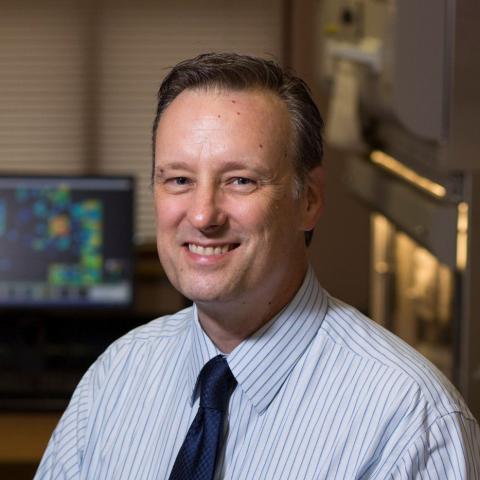
Steve Stice is Co-Founder and Chief Scientific Officer of ArunA Biomedical, Inc, where he directs the company’s clinical and research operations. He is also University of Georgia, DW Brooks Distinguished Professor and Director of the Regenerative Bioscience Center, and holds a Georgia Research Alliance Eminent Scholar endowed chair.
Prior to joining ArunA, Stice was the co-founder and served as both Chief Scientific Officer and Chief Executive Officer of Advanced Cell Technology, the first U.S. company to advance to human clinical trials using human pluripotent stem cells. He also co-founded startups Prolinia and Cytogenesis, the latter of which has since merged with ViaCyte.
Stice was recruited to the University of Georgia by the Georgia Research Alliance (GRA) and holds an endowed chair as a GRA Eminant Scholar. Additionally, Stice serves as the Director of the Univeristy of Georgia’s Regenerative Bioscience Center, co-directs The Regenerative Engineering and Medicine Research Center (REM), a joint collaboration between Emory University, Georgia Institute of Technology and UGA, is a group leader of Emergent Behaviors of Integrated Cellular Systems, a National Science Foundation Center founded by the Massachusetts Institute of Technology. Stice also sits on the toxicology Scientific Advisory Board for the Food and Drug Administration (FDA).
Stice received a Masters of Science in Reproductive Biology from Iowa State University and a Doctor of Philosophy, Developmental Biology and Embryology, from the University of Massachusetts.